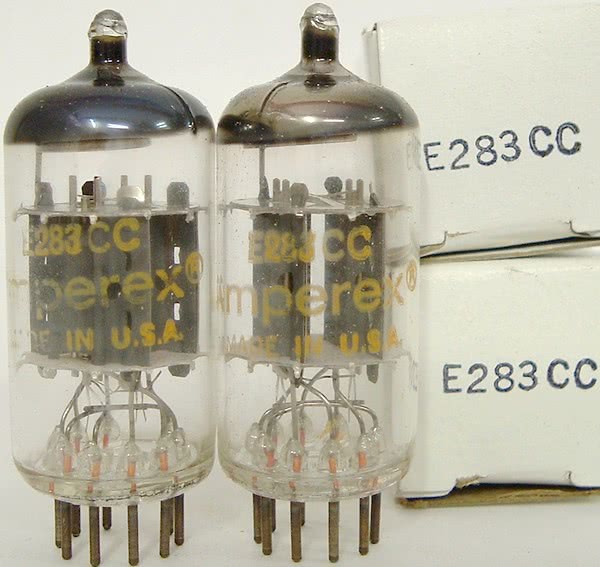This is one of many examples where tube testing requires experience to properly evaluate any tube. In this situation, using a tube tester would yield a completely wrong answer.

These tubes were factory marked as E283CC, but are actually 12AX7A tubes. Hence, if you tested them in your tube tester using E283CC settings, you would have concluded that the tubes were shorted and defective, and you would have discarded valuable NOS 12AX7A audio tubes.
The fact that these were not E283CC was readily apparent to anyone with experience. E283CC is a “special quality version 12AX7 for audiophile” with three distinguishing characteristics: (1) different pinout than 12AX7, (2) only a 6.3v heater, (3) a shield between triode sections that terminates at pin 7.
A shield between triode sections would be easily visible, and these tubes do not have a shield. Hence, they are not E283CC.
Since E283CC is a “special quality version of 12AX7”, that was a logical place to start. Experience shows that they look like Amperex 12AX7A tubes, and testing them as 12AX7A verified that premise. In fact, each tube is well balanced between its triode sections, and they are quality audiophile 12AX7A examples. (Tube #1: Triode #1 = 36, Triode #2 = 36. Tube #2: Triode #1 = 31, Triode #2 = 30. Test scores from my professionally calibrated B&K 707 mutual conductance tube tester, and also without shorts or leakage. For 12AX7, scores of 22+ good, with scores in 33 range considered typical new).
Lessons: (1) experience matters, (2) tube tester results MUST be interpreted based upon experience, and not blindly accepted as gospel, (3) you should have the experience to recognize when a tube does not look correct as marked, because blindly inserting a wrong tube into your equipment may cause serious damage and/or fireworks.
